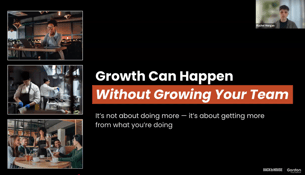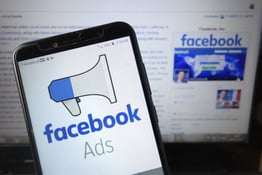Restaurant marketing continues to evolve, and we continue to do so with it. Persistence and adaptability are the keys to staying in the game. (The game being: “hey, eat here, not there.”) Even if your restaurant has weathered the dips of the pandemic (bravo, by the way!), changes are constantly afoot.
Marketing tools themselves have remained fairly steady over the past couple of years. However, the offerings on those platforms are always a moving target. It’s not enough simply to “know” email or social media or loyalty programs if you’re not also following trends in consumer behaviors, new technology, and the ever-changing whims of algorithms. Read further to get marketers’ tips on the lay of the landscape as it exists today.
If we could offer one constant in restaurant marketing strategy amid the shifting winds: No matter how you market your restaurant, your brand’s authenticity must come first. As Mike Milburn, a partner at the Fayetteville, Arkansas branding and content strategy agency Archetype put it when we chatted with him, “Find out what your identity is, your story, your meaning, your why — and then always kick back to it in every aspect of the business.”
Email marketing for restaurants
For restaurants, steady ol’ email is the key to growing a loyal customer base, not least because it drives strong loyalty programs. The mundane aspects of email — its predictability, its timeliness, its unobtrusiveness — make it an ideal platform to flex a style of communication marketers know as DRIP, an acronym for Differentiate, Reinforce, Inform, and Persuade. These are the components of any strong marketing plan, whether you’re launching new products and services or reinforcing existing ones.
“Loyalty programs paired with DRIP communication can be huge for existing patrons,” Milburn said.
Email runs on lists of names and addresses, of course. Even if you haven’t actively been building your email list, your POS system likely has been. Use those addresses to launch campaigns, offer special discounts, announce new menu items, or just tell your customers happy birthday. Just make sure every email has a good reason. Each one should be the start of a conversation, ideally with a very clear action associated. This is, of course, the pitfall of email. If people don’t think your notes are worth their time, it’s all too easy to press delete.
Social media for restaurants
For restaurants social media marketing is still king, the closest thing tech offers to true word-of-mouth. Even restaurants that brag they don’t do any advertising usually have some sort of social media presence — even if they’re only being tagged in users’ posts. If it’s working, in fact, it might be the only marketing tool some restaurants use with any sort of regularity.
Why? Because people are addicted to scrolling, and their phones have their credit card numbers stored. Today more than 70% of restaurant customers order food online, and half of them are influenced by the restaurant social media accounts they follow. The line from a gorgeous picture of a brick-oven pizza and smashing that “order” button is a short one around lunchtime.
Stephanie Swanz, who grew a food truck concept into two restaurants in a Tampa, Florida food hall, says social media has been her go-to for years, even as her strategies shifted. For the truck, social media was how she alerted customers to her location. For her current fast-casual restaurants, it helps her to foster stronger relationships with customers.
“Even though we are in a food hall and get a lot of foot traffic from that, I don't wait for them to do my marketing,” Swanz said. “We really want to make sure to cultivate our own brand. And we do that on our social media.”
For her food-truck-turned-restaurant Empamamas and her Mexican-style eatery Muchachas, those customer connections come via videos, videos, and more videos. Instagram has made no secret of leaning into short-form videos as TikTok has bloomed into a giant (especially for food lovers). At Muchachas, a post like their “walking taco” video can drive a nearly 50% spike in business over a weekend. Even when that bump subsides, Swanz said, it doesn’t shrink back to its previous levels.
Not every restaurant strikes gold with TikTok. But as you’re weighing your social media options (Facebook advertising, Instagram Reels, working with social media influencers) don’t overlook its power to really pop. Swanz credits her success on Instagram and TikTok videos to the professionals she has hired to create them.
If a dedicated creator just isn’t in your budget, give it a shot yourself. A ton of social media tools will help you build, schedule, and measure results of the stuff you post. Have fun with it.
Text notifications
With the caveat that some people will opt out of these at warp speed, many restaurants — especially those really trying to reel in more foot traffic — find that SMS marketing is a fast, affordable, responsive way to reach existing and prospective customers. Some 98% of American adults have a mobile phone, and most of them check their texts in a blink.
Another perk with SMS marketing? It’s versatile and doesn’t require just a ton of strategy. You essentially choose what you want to communicate — recent restaurant news, an exclusive promo code or menu item — and hit send. Just, y’know, don’t spam people. Texts are more invasive than emails or passively scrollable Instagram posts. Use text only when you have real value to offer people. Or, alternatively, when you want to hire them.
Restaurant review sites
The definition of a love-hate relationship, truly. Online restaurant reviews on Google, Yelp and TripAdvisor can be the bane of an operator’s existence. They’re also the first impression many people will have of your restaurant. And Google and Yelp are SEO game-changers — in effect, free advertising in a high-visibility area, if you treat them right.
People rely on a quick search when browsing or vetting places to eat, which can lead to a virtuous feedback loop as a good customer score brings in more customers who, in turn, also leave strong reviews. Your place becomes more discoverable, as a result. Those strong reviews double as testimonials you can post on social media channels, your website, T-shirts, whatever you like.
As far as responding to bad reviews, don’t stress. They’re part of doing business. Handled well, they can actually be used to your advantage. They create a public way to put right a customer’s poor experience, which can be a good look to someone looking to try your restaurant.
Set up a Google Business Profile
The world’s most-visited website controls a whopping 90% of online search traffic, and it wants your restaurant to create a free profile to appear in those searches. Setting up your restaurant’s Google Business Profile should be your first marketing move. The profile ensures your restaurant pops up in its own window with details about your location, hours of operation, your website, your phone number, directions via Google Maps, and a sampling of the latest customer reviews.
It's not only a cornerstone of strong local SEO. Your Google Business Profile also makes a handy way to keep your information up-to-date by including new menu items, expanded hours, whether you offer delivery, whether you’re closed or open on certain holidays, on and on. The more you tell your profile, the more Google will tell your customers. And while you’re welcome to spend as much as you want on separate Google ads, the profile is, to reiterate, completely free.
Third-party delivery apps
You know that chonky cut you pay to third-party apps such as Uber Eats and DoorDash that handle your deliveries? A big part of what you’re paying for is sheer exposure. DoorDash alone has more than 30 million users. That’s a lot of diners scrolling the app and seeing your restaurant pop up. It’s also a high-stakes decision for restaurants, not only because you can start your own delivery service, but because choosing among third-party delivery services also means weighing which data and marketing tools are best for you.
Under pressure to show their value as marketing tools, the apps keep rolling out new marketing features, such as in-app promotions to find new customers and entice old ones. You can also pay extra to be at the top of the heap: UberEats launched sponsored promotions through its UberEats Manager that allows restaurants to spotlight specials or specific menu items for a targeted audience.
One big advantage the apps offer, as well, is simply the depth of data they command. They will suggest promos (e.g., buy one, get one) that will perform well. And you can track the success of your spending with in-app metrics. As your audience grows, you’ll want to continually tinker with your strategy. Evolving with the times definitely gets easier when you have strong tools at hand.
[Photo by mentatdgt via Pexels]





